Last Updated on January 24, 2023 by a Friendly Gardener
Succulents are the perfect houseplant or office plant because they require little to no care and thrive all the same. If succulent foliage begins to curl, whether inward, outward, upward, or downward, your plant is communicating that something in its growing environment is stressing it. There are a variety of reasons that can cause succulent leaves to curl from improper watering to not having enough space for roots in your plant’s container. Here are some of the most common reasons that a succulent will curl its foliage.
Common Reasons Why Succulents Curl Their Foliage
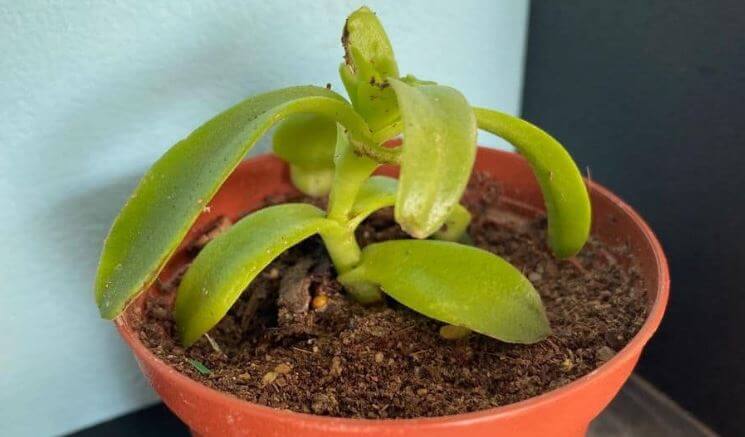
There are indeed various reasons why a succulent will curl leaves. The most common reasons include
- Improper watering
- Improper light
- Improper container size
- Incorrect soil
- A plant is rootbound
- Root rot
- Pest infestations
- The plant suffers transplant shock
- Acclimatization
Improper Watering
A watering problem can be due to either overwatering or underwatering. Overwatering means that your plant has been given too much. Excess water will usually result in soggy soil that eliminates air pockets in the soil, so your plant’s root system has no oxygen. Oxygen is essential to plant health as it ensures the plant’s aerobic respiration.
Your plant produces necessary carbohydrates through photosynthesis and then utilizes them during respiration. With too much water, your plant’s root system will drown. Succulent leaves curling down is generally indicative of overwatering. To avoid this problem, create a watering schedule and stick to it. You can also opt to bottom water your plant so that the soil will absorb as much water as it needs until the next watering.
Underwatering a succulent can also be a problem. It’s true that succulents do store water in their leaves, roots, and stems, so they can go without for longer than other types of vegetation. However, if you leave for several months or neglect your plant for a prolonged period, the foliage will become flaccid and curl downwards. Once the plant has access to water, foliage generally will return to a healthy appearance. Again, establish a watering schedule.
Improper Light
Succulents adore generous bright light and many love direct sunlight exposure. Others can manage fine with bright indirect light. When a succulent is not receiving adequate light, it will stretch toward a light source. Upper-tiered foliage may bend toward the light while lower succulent leaves pointing down indicate light deprivation. A lack of sufficient light is dangerous as this will hinder photosynthesis and plant nourishment. If a lack of light continues, the plant may shed leaves.
To resolve this condition. Place your succulent in a spot where it will have access to generous light such as a window, porch, or deck so that your plant gets a minimum of 6 hours of daily sunlight.
Surprisingly, excessive light can also negatively affect succulents. While succulents do require light, they are not desert plants. Some succulents will suffer scorching in direct sunlight, so some type of filter, such as a sheer curtain may be needed depending on your plant’s location. When a plant receives too much light. Foliage will lose water stores and leaves will start to curl downward.
Improper Container Size
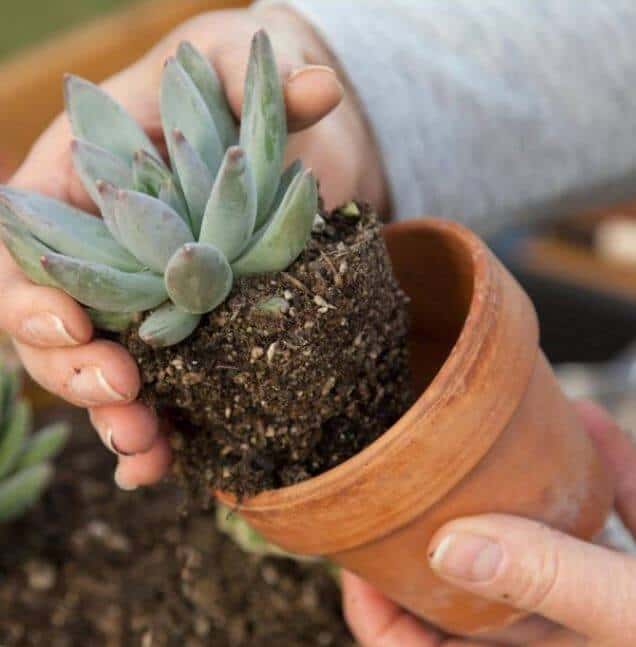
The plant pot size influences plant growth. If your plant thrives, it will eventually outgrow its container and need to be repotted. Should this happen, your succulent is at risk of becoming root bound. When a plant is rootbound, leaves can curl downward, and may even change color. If necessary, repot your succulent in a pot approximately 1 to 2 inches larger than the root system.
Incorrect Soil
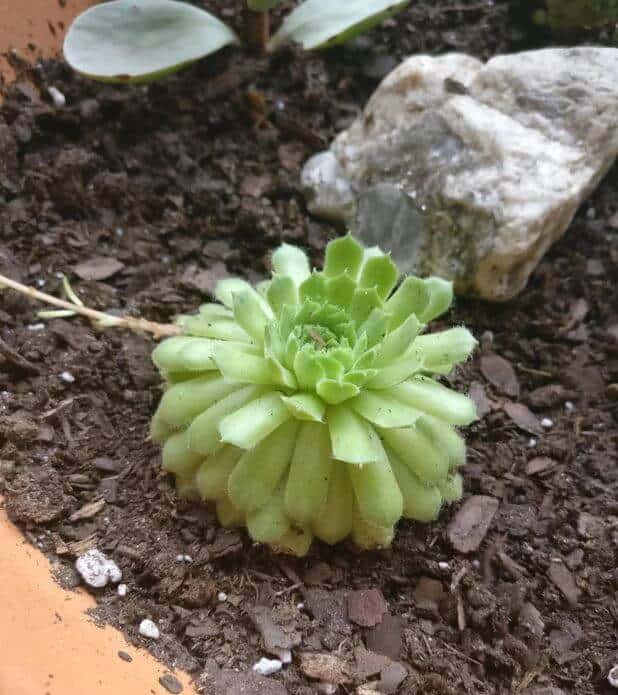
The soil bed is crucial to a plant’s growth including succulents. The best choice is soil formulated for succulents that drain well. If the soil becomes water-logged, overwatering results and oxygen deprivation follows. Leaves will curl downward. The best thing to do is procure potting soil for succulents. If you wish to blend your own, mix three parts sand, three parts potting soil, and a half part perlite and repot your plant.
Your Succulent Is Rootbound
If your plant has outgrown its pot, it may have become rootbound. Roots become tangled and may even peek out of the pot’s drainage holes and soil surface. When a succulent is rootbound, it may wilt, develop smaller foliage, not produce flowers, or even appear stunted. Leaves may droop or curl.
To remedy this condition, repot your plant in a pot one size larger than the root system.
Root Rot
Root rot is a disease that attacks the root system when it has been overwatered and is generally the result of poor drainage that leaves the roots drowning in water. There will be a lack of aeration in the soil, little or no oxygen, and decay will set in.
If root rot has begun, you will need to remove your succulent from its pot. Rinse the root system in tepid water and trim away any rotting roots. Then repot your plant in fresh dry soil.
Pest Infestations
Pests are a problem for any plant, succulents included. The pests that most often attack succulents are mealy bugs and scales, as well as root mealy bugs. Other pests that can occasionally attack succulents include fungus gnats and spider mites. Mealy bugs and scales are sap suckers, so they will suck the succulent’s juices which may cause foliage bending and curling.
An insecticidal soap can be used to eliminate pests from your plant.
Your Succulent Suffers Transplant Shock
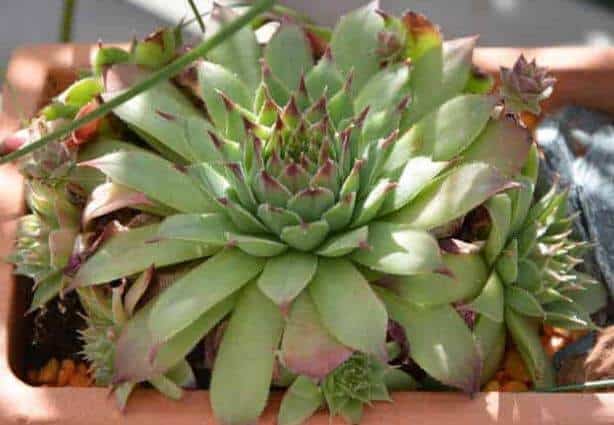
Your succulent may experience transplant shock because you have repotted it. Your plant may require a few days to a few weeks to adapt to its new pot and soil bed. If the plant requires more time, leaves may curl downward during the adjustment. Avoid repotting on very hot days, and only water lightly to avoid overtaxing the plant.
Acclimatization
When your plant is moved to a new location, it will need some time to acclimatize to its new environment. Be careful when moving your plant to a new spot as this may harm your plant. Leaves may begin to curl downward only because your plant is stressed by its new environment.
If you choose to move your plant to a place with less or more light, you may want to do so gradually for several hours daily over a few days.
Succulent Leaves Curling Up and Inward
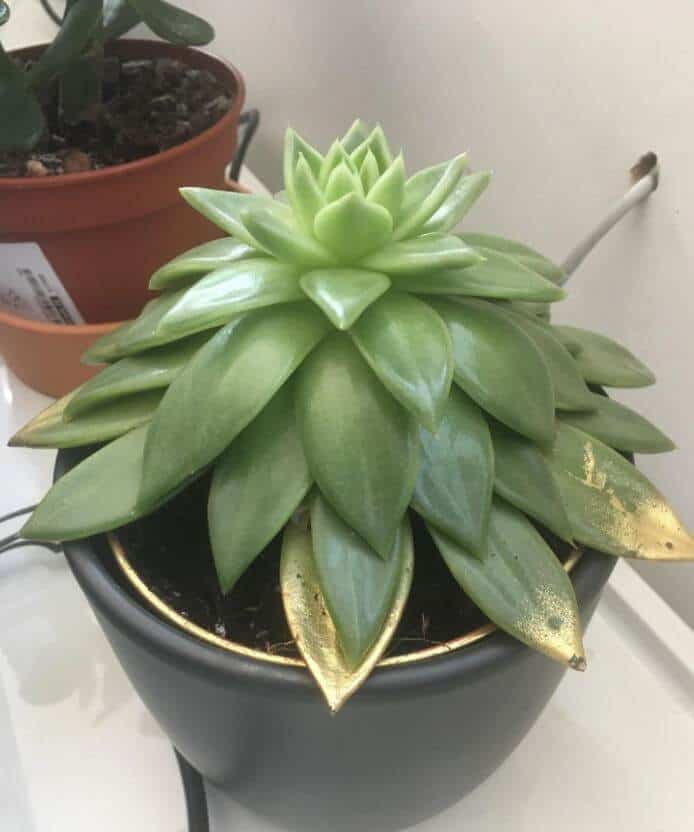
While just about any of the problems can cause succulent leaves to curl up, the most common reason for succulent leaves curling is underwatering or insufficient light. This is true for succulent leaves curling inward as well. You’ll need to consider moving your plant to a sunnier location. If you are cultivating your succulent in a low-light environment, consider using grow lights to compensate for a lack of sunlight.
Succulent Leaves Closing Up
When succulent foliage closes up, it is usually too excessive exposure to sunlight. If the light is too intense, leaves will close tightly as a defense mechanism. This is one method that the plant protects itself from both intense light and intense heat.

